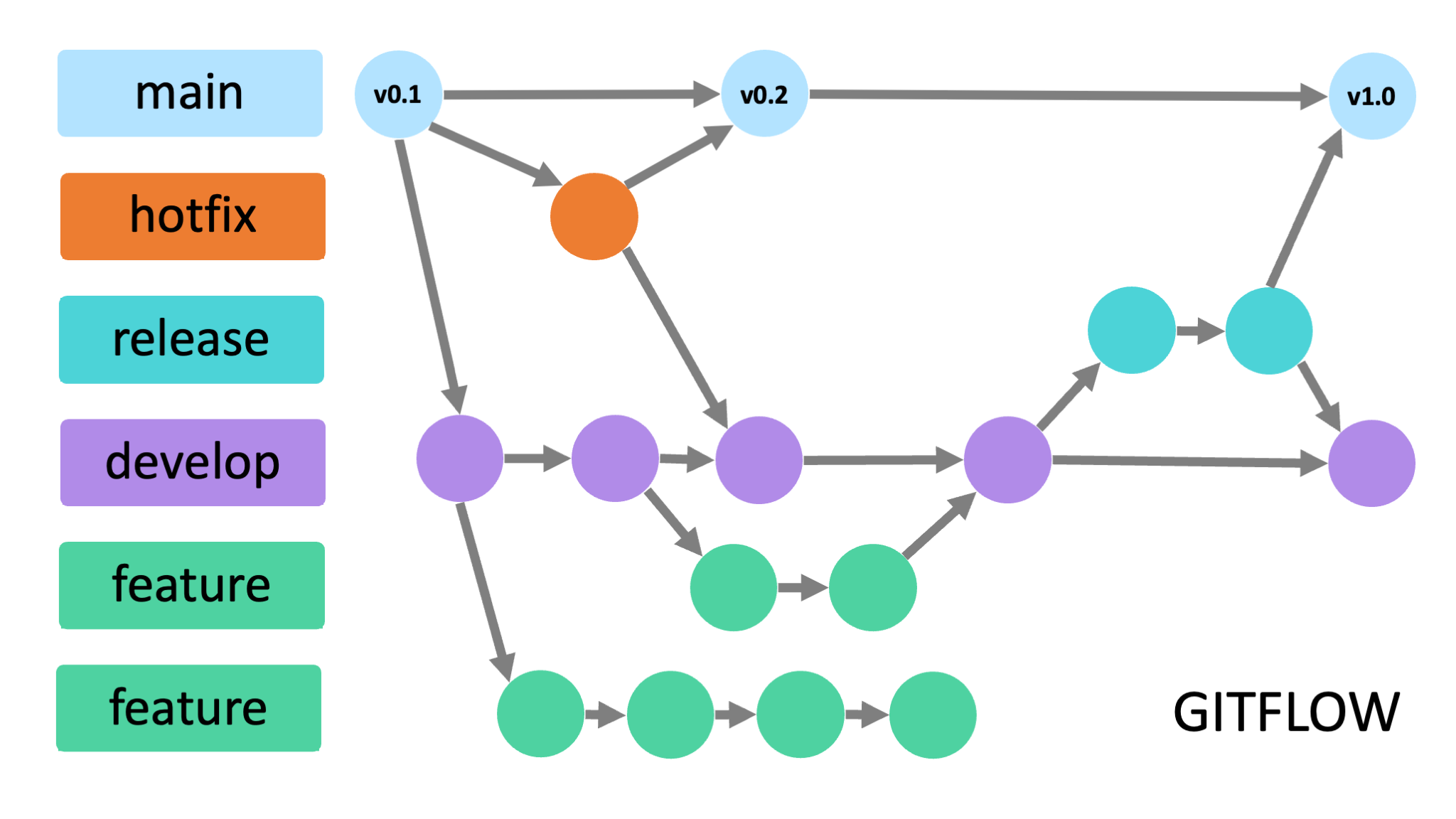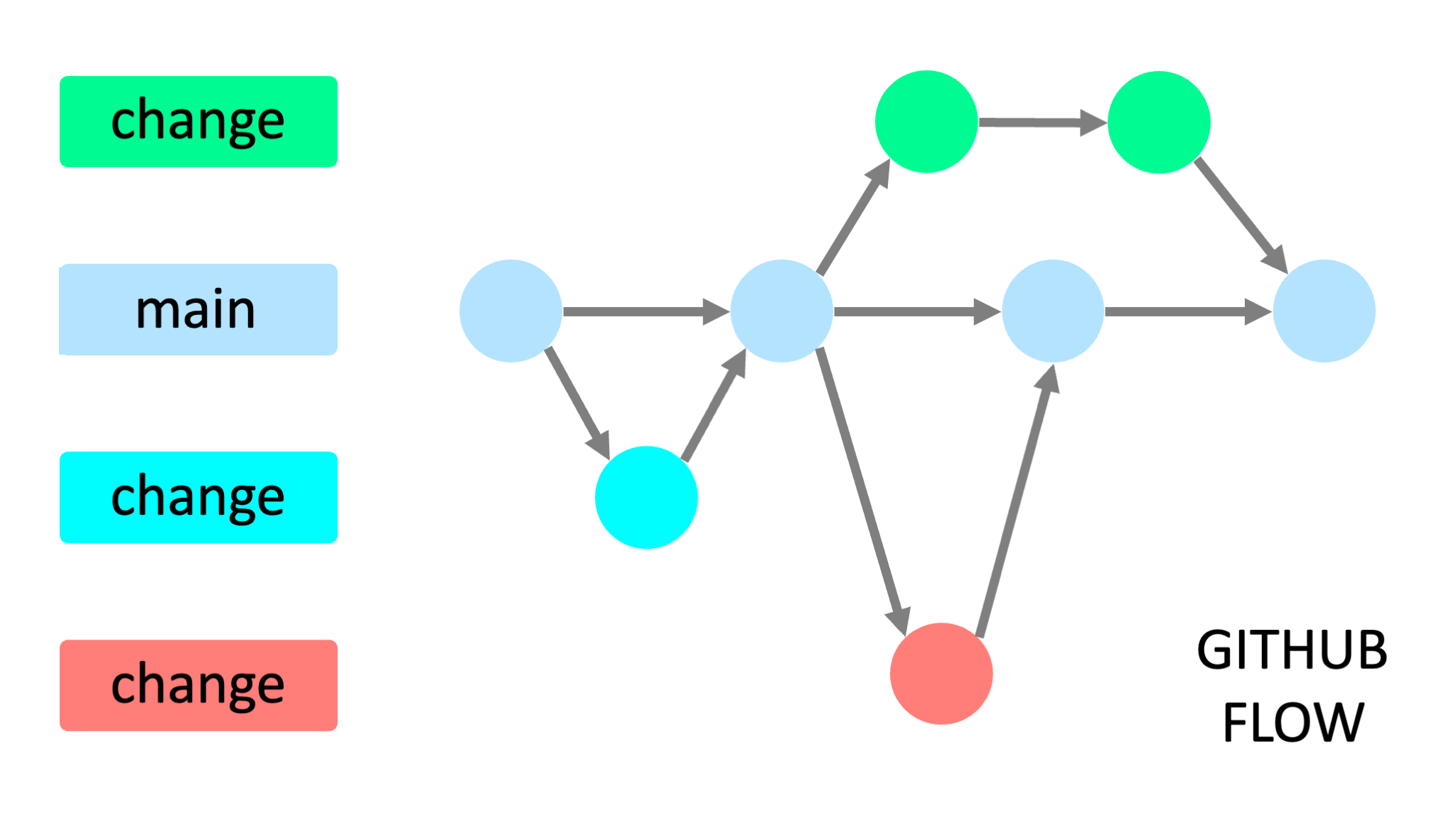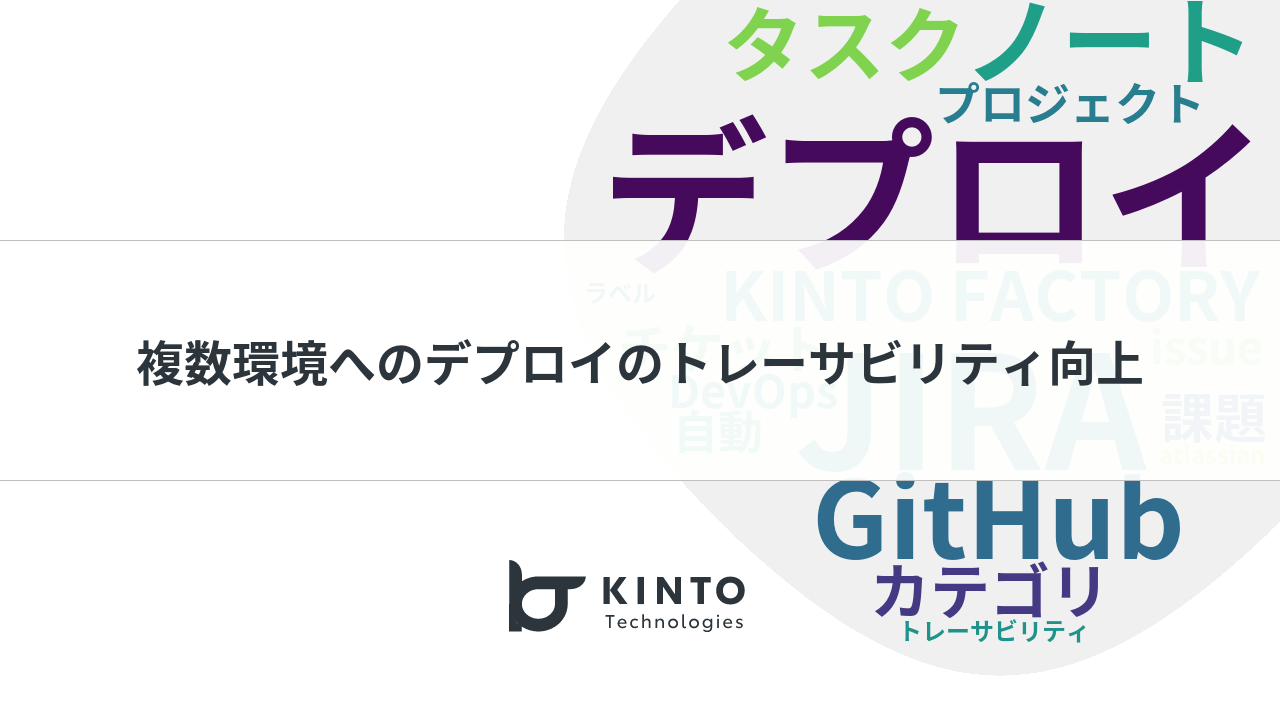Git-flowからGitHub-flowへ

こんにちは 👋
KINTOテクノロジーズ、グローバルグループのRuoyang Wenです。 Global KINTO App チームのフルスタックエンジニアとして勤務しています。当グローバルグループについての詳細はこちらでご確認いただけます
目的
スタートアップ企業ではよくあることですが、初期のプロダクトにはいくつかの妥協点があります。ベネフィットを増やすためには、サービス改善の他に、ワークフローも改善する必要があります。
本記事では、Git-flowからGithub-flowへ変更した理由とその方法をお伝えします。
試み
トヨタグループの企業として、当社では日々の作業の中で日本語の「カイゼン(改善)」という言葉を使って改善を実施しています。お客様からのフィードバックと分析データによって、さらに良いサービスを提供するためのカイゼンはたくさんあります。自動化により、カイゼンプロセスを加速させることが可能です。
エンジニアにとって、ソースコードをコミットすることは日々の業務であり、単に成果物を提出するだけでなく、サーバー環境でコードをテストすることも含みます。我々は継続的インテグレーションと継続的デプロイ(CI/CD)をチームに導入することで、反復作業の削減を図りました。
CI/CDは、自動化を導入することにより、高頻度でアプリをリリースできる手法です。[1]
我々はこれまで、Git-flowに従って、ソースコードと開発の進捗を管理してきました。しかし、CI/CDを導入してすぐに、作業プロセスがスピードアップしないことに気がつきました。
推論
 git flow ダイアグラム
git flow ダイアグラム
CI/CDスクリプトを利用したり、管理する作業は煩雑です。様々なブランチが多くあるため、ブランチを一つのカテゴリからもう一つの他のカテゴリにマージさせる際、別のスクリプトが必要になります。:featureからdevelopへ、developからreleaseへ、releaseからmainへ、hotfixからmainへ、mainからdevelopへ、_developからfeatureへ_等… いたるところにコンフリクトが生じます。コンフリクトは自動化スクリプトでは解決できません。自動化により日々の作業量が増大しました。なぜでしょうか。
リサーチを実施して判明したこと:**Git-flowは元来、手動かつラグのあるワークフローです。**そこで、新しいワークフローが必要になります。
再試行
先のリサーチで見つけたいくつかのワークフローの中で、私たちはもともとソースコードをGitHubに保存していることもあり、GitHub-flowを試してみることにしました。
 github flow ダイアグラム
github flow ダイアグラム
今回はブランチが二種類のみです:mainと「change-of-anything」。そしてmainへ直接コミットすることをブロックします。mainをアップデートする唯一の方法は、mainに対してプルリクエストを実施することです。その結果、必要なのは1つのCI/CDスクリプトのみとなり、どんなコンフリクトもプルリクエストの中で発見・解決することが可能です。
新しい課題
我々はブランチ戦略を簡素化し、CI/CDを実施するスクリプトは1つだけで、コンフリクトを管理するためにプルリクエストを利用しました。これですべて解決でしょうか。プラス面もありますが、マイナス面もあります。
プラス面を見てみましょう。反復作業を自動化スクリプトに移管したことで、全員がより生産性の高い作業を行うことができます。リリースとデプロイのプロセスはスクリプトによって処理されるため、ローカルで加えた変更は2分以内にサーバーにデプロイできます。
では、マイナス面を見てみましょう。システムの機能/バージョンの管理ができなくなりました。機能は各ブランチには保存されず、プルリクエスト後に直接 main に保存されるため、次のバージョンでどの機能を保留し、どの機能をリリースするかが決められません。また、main ブランチは最新のソースコードでアップデートされ続けるので、バージョンの番号は1日で数百も増加する可能性があります。
ネクストステップ
幸いなことに我々のみが直面している課題ではありません。すでにこれらの課題に直面している人々がおり、我々は彼らの歩みをたどり、彼らの解決策を見ることができます。
フィーチャートグルを使って、いつでも機能を有効/無効にできます。パラメータの中に保存できるので、新規のリリース/デプロイは不要です。異なる機能の組み合わせを備えた異なるバージョンをリリースするGit-flowよりも優れています。
バージョン番号は、特定のコミットを本番環境にデプロイした後にのみ追加されます。残りの環境には、バージョン番号としてコミットハッシュを使用します。これは、そのコミットのバグや欠陥を即座に見つけるのに役立ちます。
まとめ
疑う余地もなく、すべての問題を解決する完璧なソリューションはありません。GitHub flowには欠点もあり、私はチームと一緒に我々のプロダクトだけではなく、作業方法についてもカイゼンするべく動いています。
個人的には、Git-flowはウェブポータルのようなもので、定義されたルールですべてを分類します。誰もミスしなければ、問題なく動作します。一方、GitHub-flowはサーチエンジンのようなもので、本番環境にリリース/デプロイするコミットにバージョン番号をタグ付けし、他の環境ではコミットハッシュがバージョン番号として利用されます。そのため、何か問題があれば、検索でそれらのバージョンを簡単に見つけることができます。
参考
- トヨタ生産方式
- What is CI/CD?
- What is Continuous Integration?
- Git flow for agile teams is a no no
- Please stop recommending Git Flow!
- Git Flow vs GitHub Flow
- GitHub flow - GitHub Docs
- Continuous Integration Contradicts Features Branches!
- How to Achieve Continuous Deployment with Feature Flags
関連記事 | Related Posts

Git-flowからGitHub-flowへ

Gitflow for Back-Office System Development

Efforts to Improve Deploy Traceability to Multiple Environments Utilizing GitHub and JIRA

Pull Request Options on GitHub and Pitfalls

Reduce Leftover PRs! GitHub Actions Workflow Recommendations

Half-Year Anniversary of the Launch of KINTO FACTORY: A Path of Challenge and Learning
We are hiring!
【フロントエンドエンジニア(リードクラス)】KINTO中古車開発G/東京
KINTO開発部KINTO中古車開発グループについて◉KINTO開発部 :58名 - KINTOバックエンドG:17名 - KINTO開発推進G:8名 - KINTOフロントエンドG:19名 - KINTOプロダクトマネジメントG:5名 - KINTO中古車開発G:19名★ ←こちらの配属になります。
【クラウドエンジニア(クラウド活用の推進)】Cloud Infrastructure G/東京・大阪・福岡
KINTO Tech BlogCloud InfrastructureグループについてAWSを主としたクラウドインフラの設計、構築、運用を主に担当しています。
